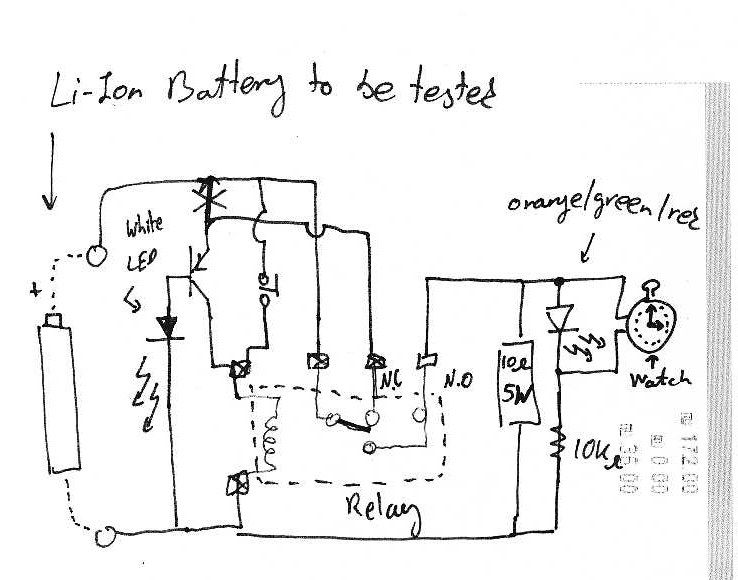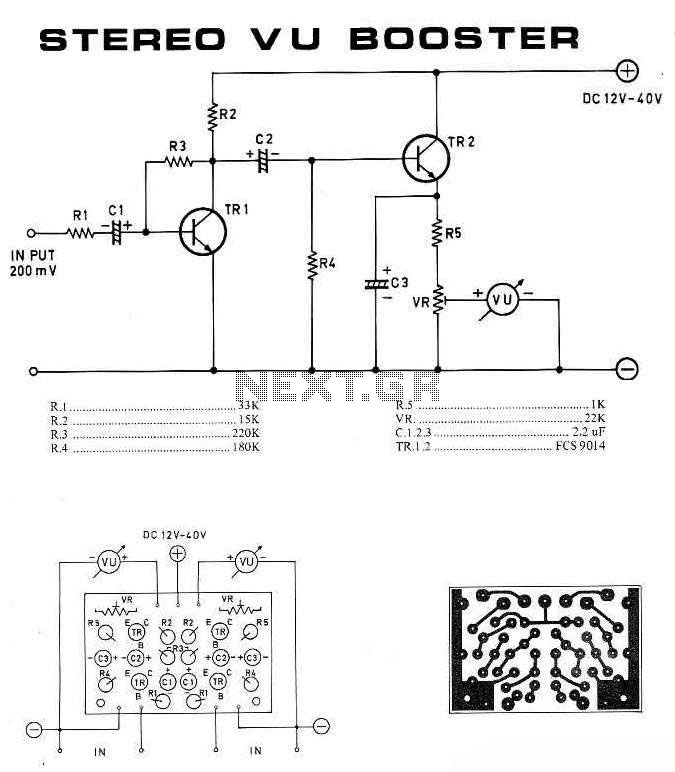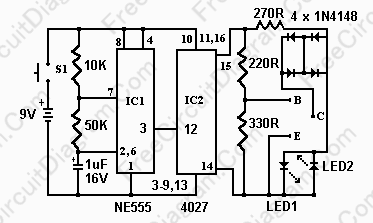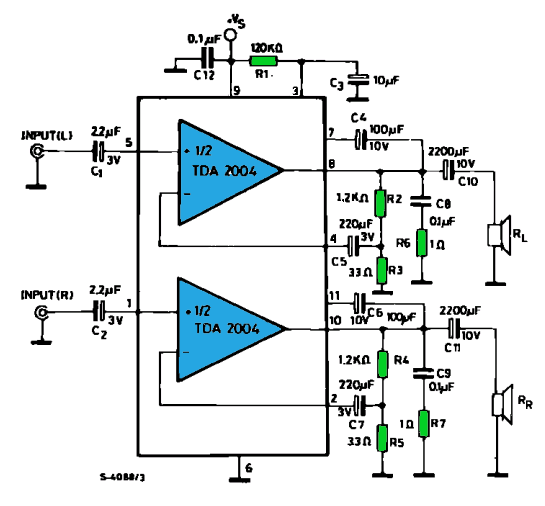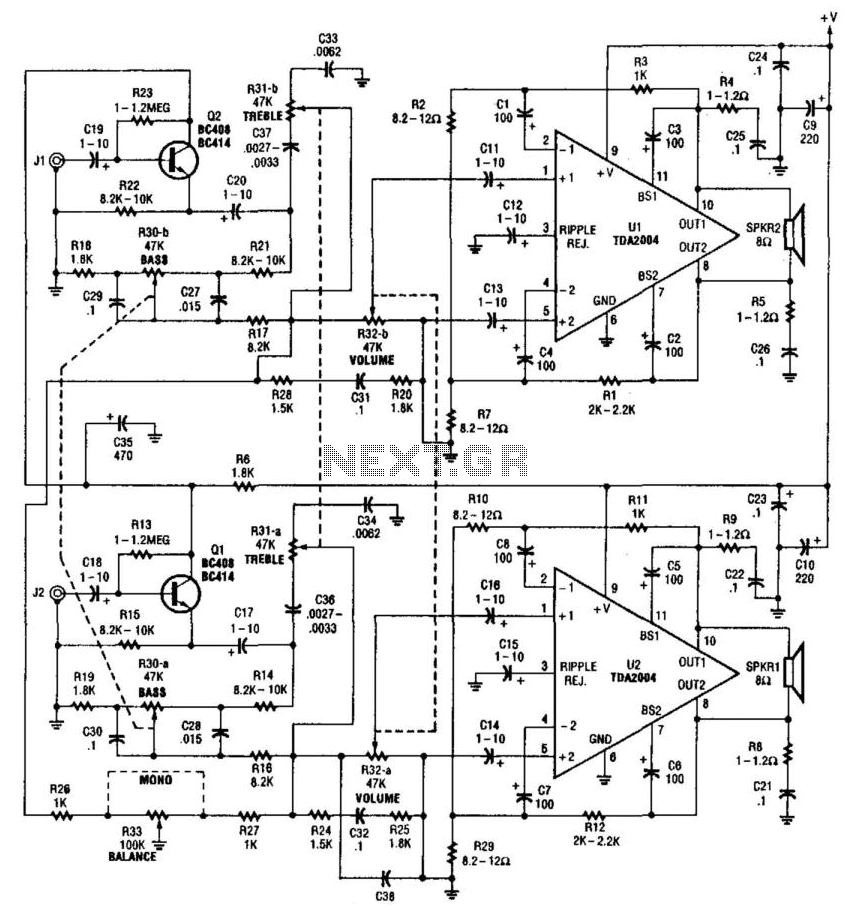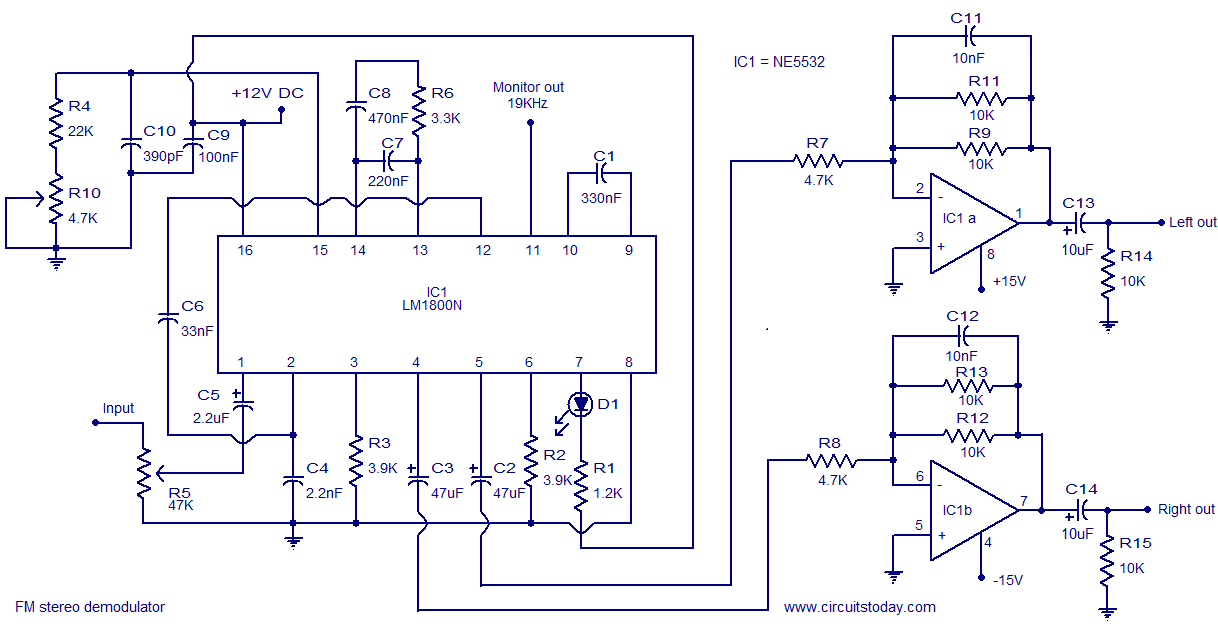
Stereo balance tester
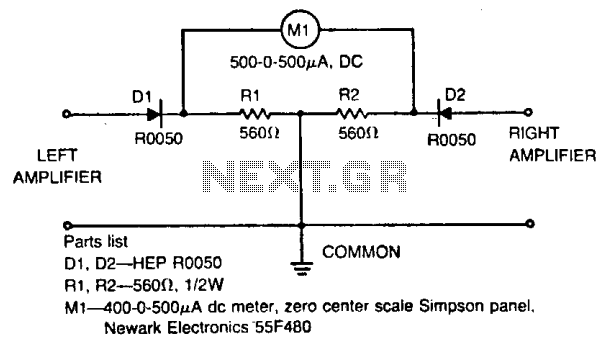
The meter displays the volume and tone control balance between the left and right stereo amplifiers. For enhanced usability, the meter is designed as a zero-center type. Resistors used in the circuit have a tolerance of five percent or better, and the diodes are a matched pair. Optimal stereo level and phase balance are achieved with matched speakers when the meter reads zero. If the meter indicates a value on either side of zero, it suggests that the levels are not matched or that the wiring is incorrectly phased. To verify phasing, ensure that the meter leads are connected to the hot terminals of the amplifier while the common leads are grounded.
The described circuit is a stereo balance meter that provides visual feedback on the audio signal levels from a stereo amplifier setup. The zero-center meter is crucial for indicating whether the audio signals from the left and right channels are balanced. When both channels are equally powered, the meter should ideally read zero, which signifies that the audio output is in phase and that both speakers are matched in terms of output level.
The choice of using five percent tolerance resistors ensures that the circuit maintains a reasonable degree of accuracy in its readings, minimizing errors that could arise from component variations. Matched diodes are essential in this circuit to ensure that the signal processing remains consistent, as any discrepancies in diode characteristics could lead to incorrect readings on the meter.
In practical applications, if the meter displays a reading away from zero, it indicates a potential issue with the audio setup. This could be due to mismatched speaker impedances or incorrect wiring configurations, which can cause phase issues. To troubleshoot, it is recommended to check the connections to ensure that the meter leads are properly connected to the amplifier's hot terminals. The common leads should be securely grounded to provide a stable reference point for the measurements.
This balance meter circuit can be integrated into various audio systems to enhance user experience by allowing for easy adjustments to achieve optimal sound quality. Proper calibration and setup are vital for ensuring that the meter functions accurately, thereby facilitating the correct adjustment of audio levels for an immersive listening experience.The meter will show volume and tone control balance between left and right stereo amplifiers. For maximum convenience the meter is a zero-center type. Resistors are five percent or better and the diodes a matched pair. Optimum stereo level and phase balance occurs for matched speakers when the meter indicates zero. If the meter indicates either side of zero, the levels are not matched or the wires are incorrectly phased. Check phasing by making certain the meter leads are connected to the amplifier hot terminals and the common leads go to ground.
🔗 External reference
The described circuit is a stereo balance meter that provides visual feedback on the audio signal levels from a stereo amplifier setup. The zero-center meter is crucial for indicating whether the audio signals from the left and right channels are balanced. When both channels are equally powered, the meter should ideally read zero, which signifies that the audio output is in phase and that both speakers are matched in terms of output level.
The choice of using five percent tolerance resistors ensures that the circuit maintains a reasonable degree of accuracy in its readings, minimizing errors that could arise from component variations. Matched diodes are essential in this circuit to ensure that the signal processing remains consistent, as any discrepancies in diode characteristics could lead to incorrect readings on the meter.
In practical applications, if the meter displays a reading away from zero, it indicates a potential issue with the audio setup. This could be due to mismatched speaker impedances or incorrect wiring configurations, which can cause phase issues. To troubleshoot, it is recommended to check the connections to ensure that the meter leads are properly connected to the amplifier's hot terminals. The common leads should be securely grounded to provide a stable reference point for the measurements.
This balance meter circuit can be integrated into various audio systems to enhance user experience by allowing for easy adjustments to achieve optimal sound quality. Proper calibration and setup are vital for ensuring that the meter functions accurately, thereby facilitating the correct adjustment of audio levels for an immersive listening experience.The meter will show volume and tone control balance between left and right stereo amplifiers. For maximum convenience the meter is a zero-center type. Resistors are five percent or better and the diodes a matched pair. Optimum stereo level and phase balance occurs for matched speakers when the meter indicates zero. If the meter indicates either side of zero, the levels are not matched or the wires are incorrectly phased. Check phasing by making certain the meter leads are connected to the amplifier hot terminals and the common leads go to ground.
🔗 External reference
